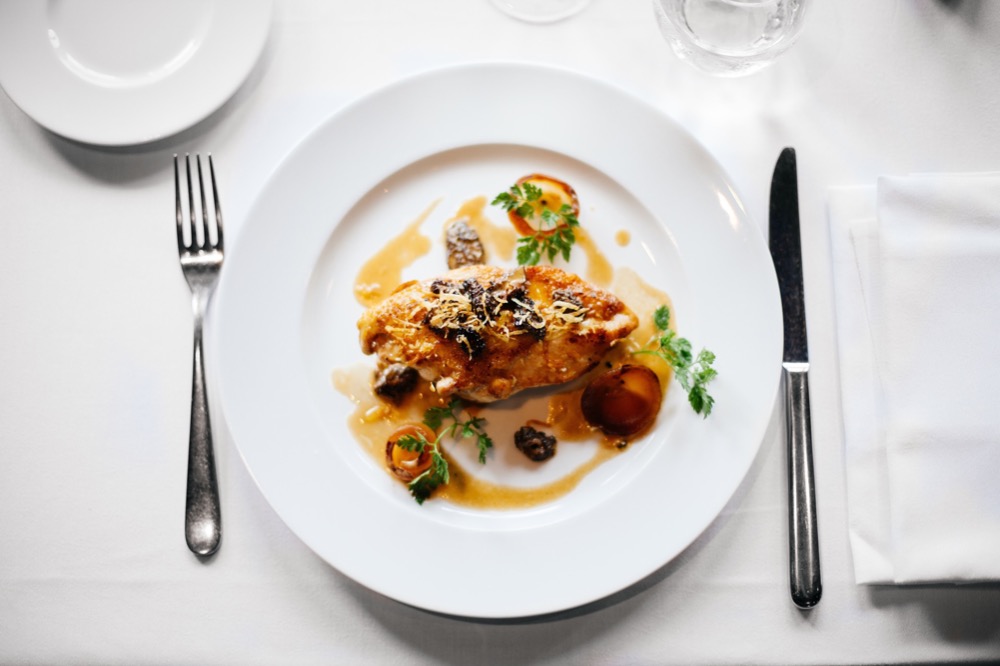Are owners’ culinary expectations achievable?
Efrem Leigh, looks at the reality of what top superyacht chefs can offer owners with high expectations…
With ‘Michelin-star experience’ becoming an increasing request when recruiting a superyacht chef, Efrem Leigh, founder of YachtChefs.com, looks at the reality of what top superyacht chefs can offer owners expecting to dine in a Michelin-star kitchen on board.
Look through the job listings on crew-agency websites or on social media, and you’ll notice more and more job adverts are asking for chefs only if they have Michelin-star experience. Yacht owners eat in the best restaurants around the planet and many expect the same level of cuisine on their yachts. The question is whether this is achievable and a good thing, or just a passing trend.
What most owners don’t realise is the amount of effort and manpower required for Michelin-star restaurants to produce the food they tuck into. It takes a large brigade of chefs to work together to deliver this amazing cuisine, and this is something the yacht owner won’t have on board with a sole chef, or even a head chef with a sous chef.
Take Noma in Copenhagen, for example. It has been voted best restaurant in the world and has two Michelin stars. It has a huge operation that backs up the front-of-house delivery of its food. Every day, a group of foragers is out scouring the coast and woodlands for fresh seasonal produce that is the backbone of its offering. Then there is its research and development facility – the test kitchen, which is essentially a lab where new dishes are tried and created, with around six new dishes being created on a weekly basis, each taking more than 80 hours to develop. More than 30 pairs of hands are involved in the production of Noma’s dishes, and that’s how they can focus on the quality, continuity, variety and attention to detail that has earned the restaurant its stars. This cannot be replicated on a yacht, so what can a yacht owner expect on board?
Practical considerations on board a superyacht will affect what a chef can produce on a plate. For example, if the guests are eating outside on the aft deck on a windy day at anchor, chefs will be wasting their time plating up and using micro herbs, light foams or edible soils.
Chefs new to yachting have to learn to adapt quickly and be a ‘jack of all trades’, and those from fine-dining backgrounds will bring new techniques and ideas into the industry, but they have to be flexible and prepared to hit the ground running as they won’t be able to rely on their brigade to get the job done.
"More than 30 pairs of hands are involved in the production of Noma’s dishes. This cannot be replicated on a yacht."
A yacht chef has to plan ahead and expect the unexpected. They must be able learn how to provision in remote locations, using what’s available locally to create their menus, and be resourceful. Provisioning companies can help with this, and all and any provisions are accessible thanks to global shipping. However, not all yachts allow their chefs to use this resource, so a chef will often have to shop in person in local markets. For smaller yachts, this is more enjoyable for the chef as they get to see, touch, smell and taste what is on offer locally and discover what is in season.
Add into the mix the fact that storage space for equipment is limited, as is fridge, freezer and dry-stores space on board most yachts. On larger yachts with walk-in fridges and freezers, and larger galleys with a section for pastry, much more can be done, but on smaller vessels it is a challenge that yacht chefs have to overcome on a daily basis. As such, the modern yacht chef will often use equipment such as sous vide (water baths) to control the cooking of their cuisine, while more and more are also using the latest molecular techniques to add the wow factor to their dishes with gels, spheres, foams and dry ice.
A land-based chef from a Michelin-star restaurant who comes into yachting will need to pick up these skills quickly, and many chefs struggle as sole chefs as they are simply not used to doing all the work themselves – from pot-washing and cleaning their own galley to provisioning, upkeep of stores, menu-planning, costing and budget control, not to mention catering for any and every dietary requirement and feeding the crew healthy and varied food. It takes a special kind of person to succeed in a yacht galley. The good news is that thousands of chefs do so every year.
This season has seen many chefs still looking for work in June, and a large number of new entrants to yachting arriving in the main ports since early April. Many of these chefs are from fine-dining restaurants on land, and this brings new ideas, fresh enthusiasm and passion, which can only be good for yachting as a whole.
NEW: Sign up for SuperyachtNewsweek!
Get the latest weekly news, in-depth reports, intelligence, and strategic insights, delivered directly from The Superyacht Group's editors and market analysts.
Stay at the forefront of the superyacht industry with SuperyachtNewsweek
Click here to become part of The Superyacht Group community, and join us in our mission to make this industry accessible to all, and prosperous for the long-term. We are offering access to the superyacht industry’s most comprehensive and longstanding archive of business-critical information, as well as a comprehensive, real-time superyacht fleet database, for just £10 per month, because we are One Industry with One Mission. Sign up here.
NEW: Sign up for
SuperyachtNewsweek!
Get the latest weekly news, in-depth reports, intelligence, and strategic insights, delivered directly from The Superyacht Group's editors and market analysts.
Stay at the forefront of the superyacht industry with SuperyachtNewsweek




